How To Feed Bones Safely To Dogs
[easy-social-share]
There are many conflicting opinions related to whether we should feed our dogs’ bones.
When asked their opinion as to whether feeding bones to dogs is a good idea, many vets will give you the hard NO, while others will advise – “it depends”.
Feeding bones isn’t without risk.
In this article, we’ll discuss the pros and cons of giving your dog a bone, so that you can make an informed decision.
Let’s get right to it.
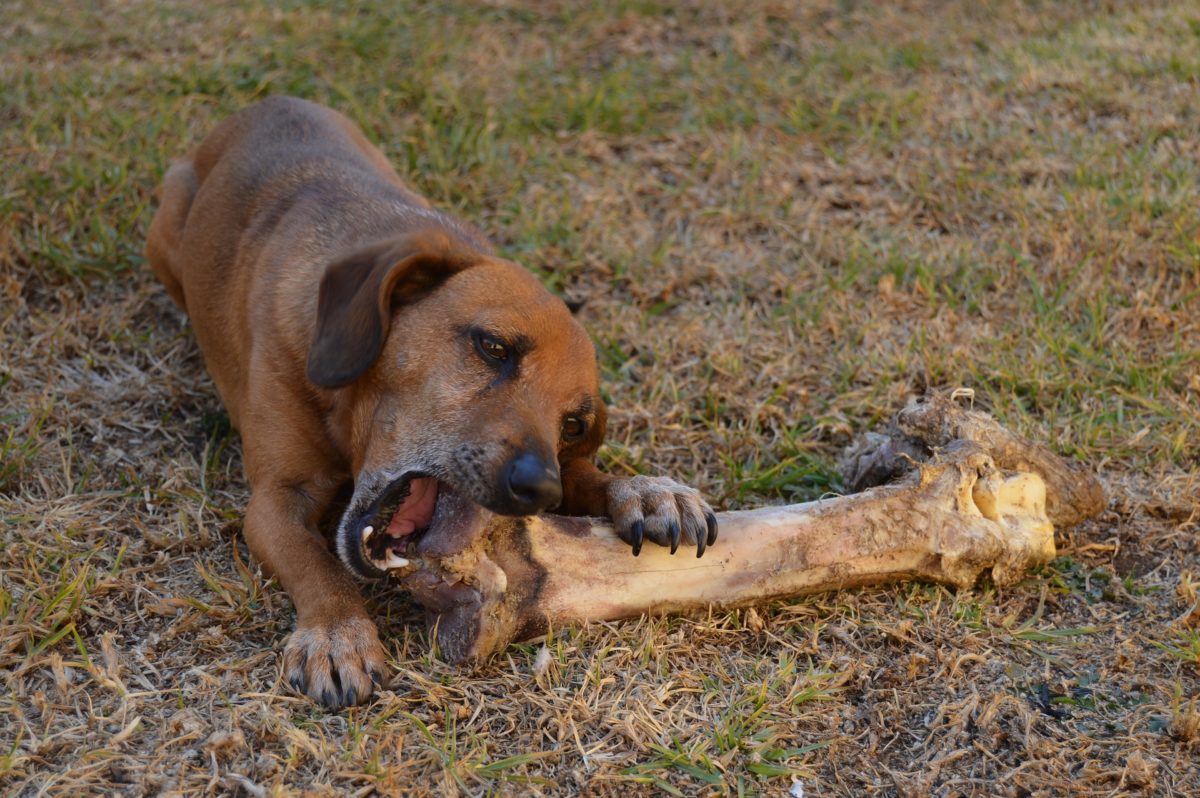
Many of us associate chewing bones with cleaning our dog’s teeth and some owners will also feed raw meaty bones in an attempt to provide a source of calcium.
Pet owners are known to feed their dogs many types of bones: little bones, brisket bones, marrow bones, chicken necks, turkey necks, cooked bones, raw meaty bones, leg bones, big bones, and bad bones.
However, feeding your dog a bone is not always the best option for your dog’s dental health, and sometimes they are actually very bad for your pet’s dental and physical health.
In the United States of America, the Food and Drugs Administration (FDA) has released a statement outlining that bones should NOT be given to your pet.
Although it’s possible to understand the reasoning for this recommendation, many tend to approach feeding bones in a similar way that we would if talking about alcohol with a teenager – that is, from a harm minimisation point of view.
The USA’s Food and Drugs Administration (FDA) has released a statement outlining that bones should NOT be given to your pet.
Outright banning the feeding of bones is unlikely to help, because, just like the alcohol with teenagers example, most people will feed a bone anyway.
Instead, let’s focus on how feeding bones in the diet can be done safely, keeping your pet healthy, and living to a ripe old age with the least damage to their teeth and body!
Why Feed Bones To Dogs?
“Bones are natural!”
“Dogs are designed to eat bones!”
Maybe?
But this doesn’t necessarily give bones any magical properties to clean your pet’s teeth.
There is no doubt that dogs and cats (in the wild) have to use their teeth to rip meat off bones, and some will eat bones.
In those animals, it seems that eating raw meat and bones may help reduce the amount of plaque and calculus (tartar).
Does this mean that bones are the answer to all our pet’s dental woes?
The short answer is, No.
Unfortunately, there are a couple of things going on here:
Firstly, your pooch is not a wild dog.
Its mum and dad weren’t, and neither were its relations going back 20 generations.
The breeds we have running around today are far removed from wild ancestors and as part of that, their oral anatomy is different too.
Domestic dog teeth do not work in the same way as their ancestors’ teeth did.
Wild Dog Dentition Skulls
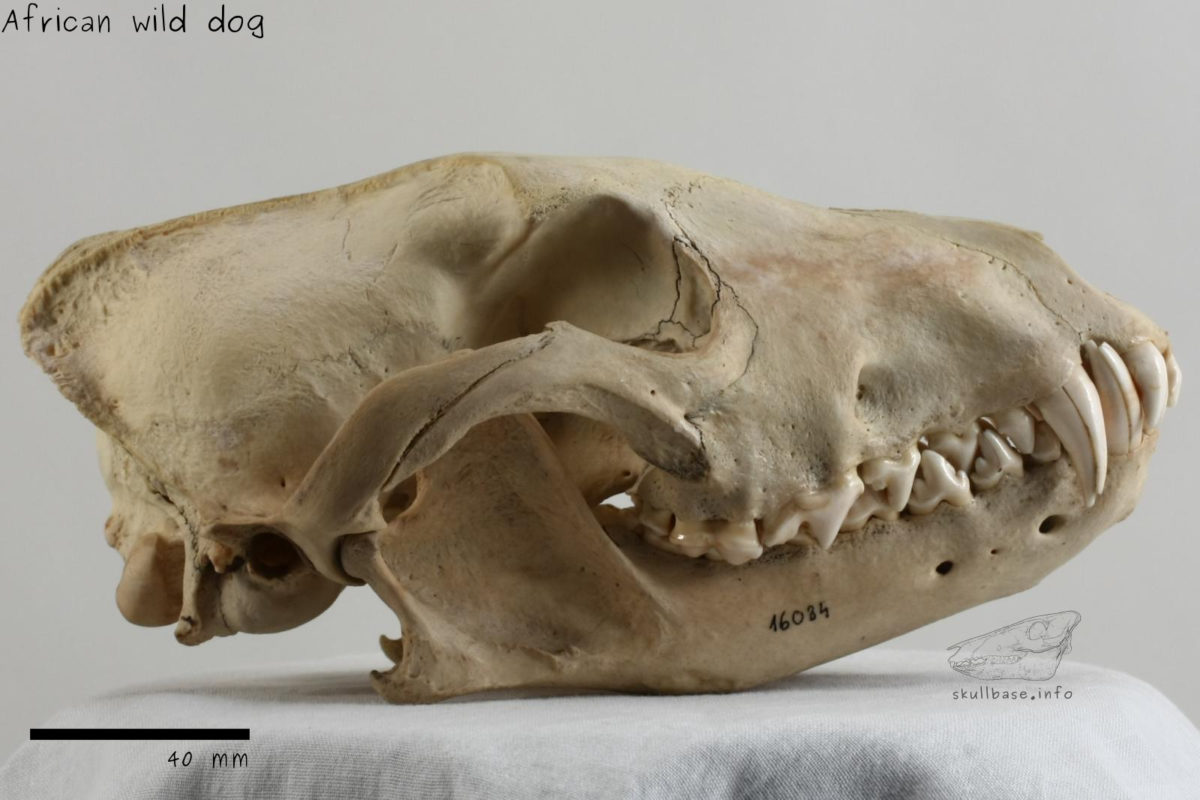 African wild dog Lycaon pictus skull photo from the Hungarian Natural History Museum.Courtesy of Skullbase.
African wild dog Lycaon pictus skull photo from the Hungarian Natural History Museum.Courtesy of Skullbase.
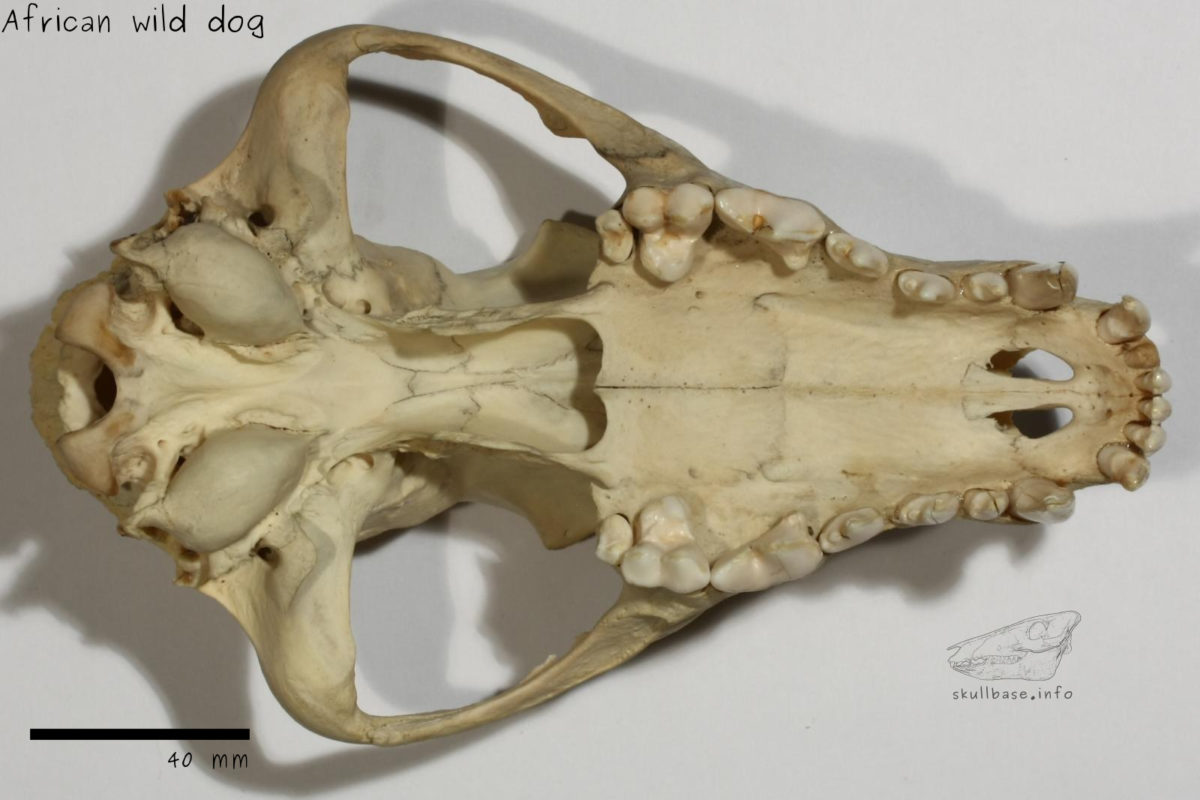 African wild dog Lycaon pictus maxilla, photo from the Hungarian Natural History Museum.Courtesy of Skullbase.
African wild dog Lycaon pictus maxilla, photo from the Hungarian Natural History Museum.Courtesy of Skullbase.
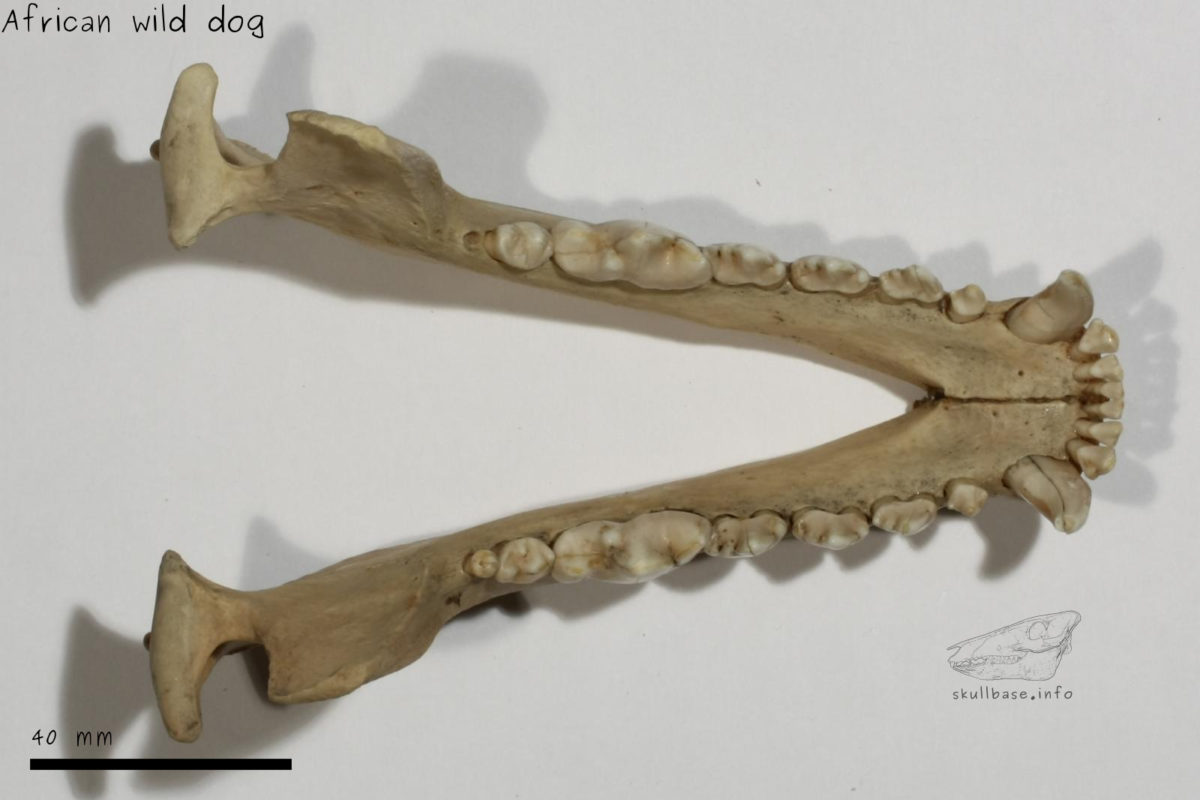 African wild dog Lycaon pictus mandible, photo from the Hungarian Natural History Museum.Courtesy of Skullbase.
African wild dog Lycaon pictus mandible, photo from the Hungarian Natural History Museum.Courtesy of Skullbase.
Domestic Dog Dentition Skulls
In comparison here is the skull of a domestic dog.
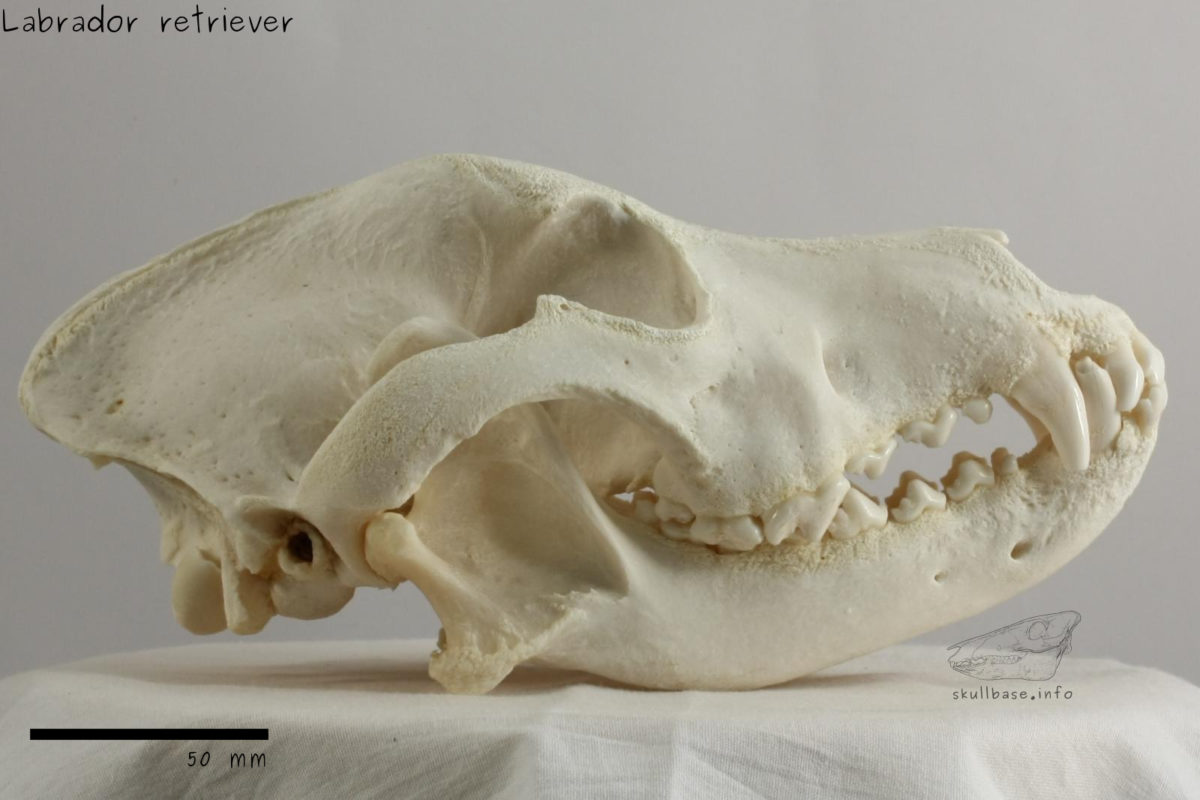 Domestic dog labrador retriever skull. Courtesy of Skullbase.
Domestic dog labrador retriever skull. Courtesy of Skullbase.
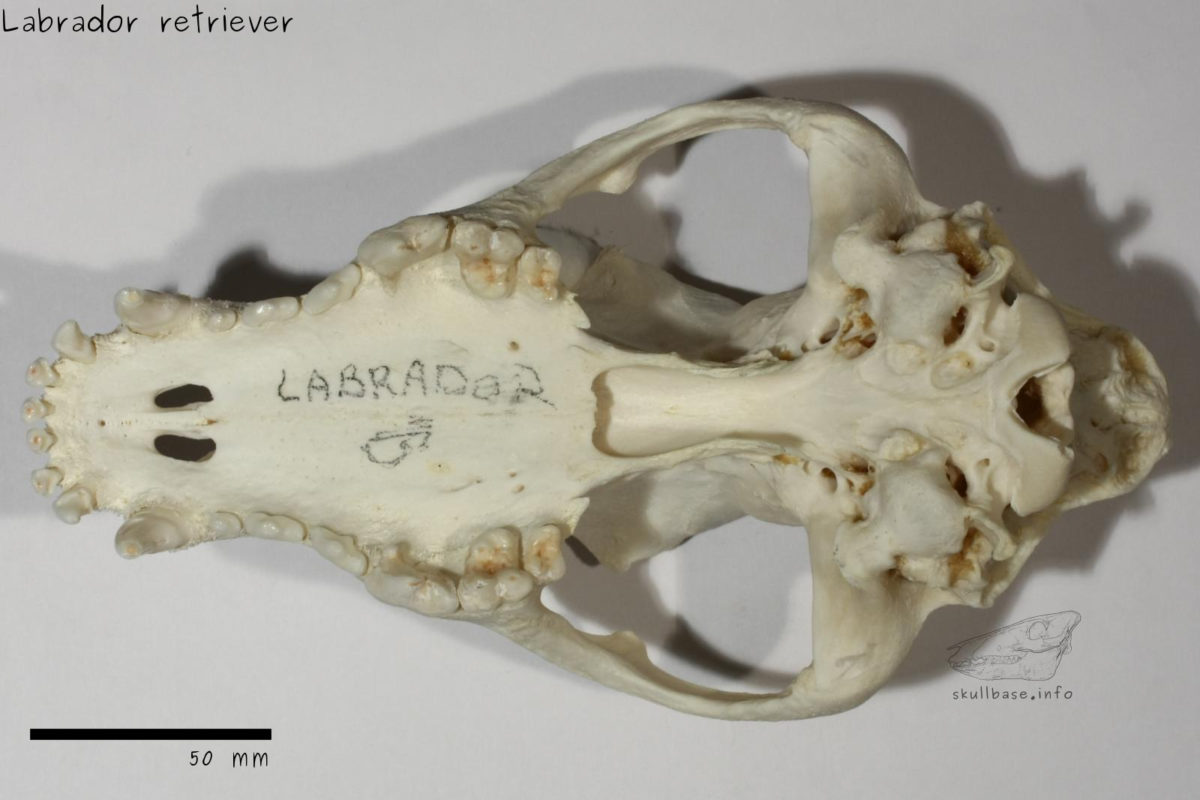 Domestic dog labrador retriever maxilla. Courtesy of Skullbase.
Domestic dog labrador retriever maxilla. Courtesy of Skullbase.
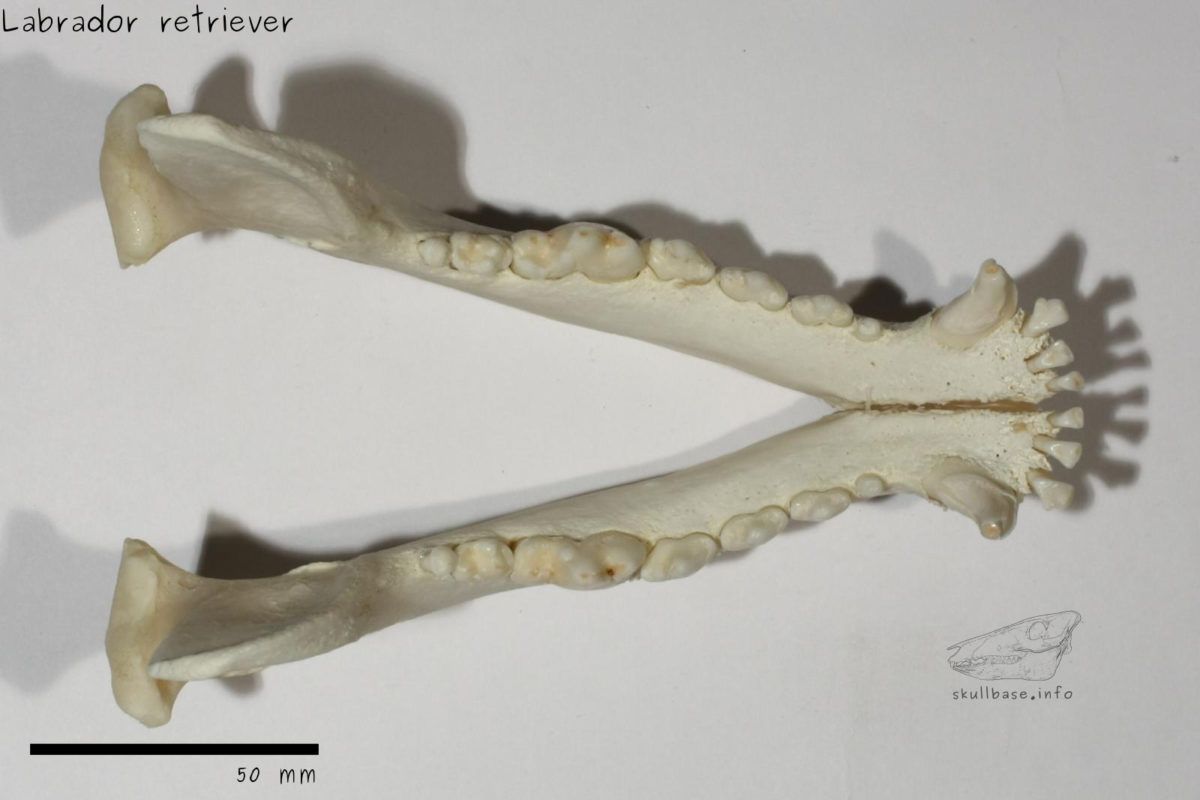 Domestic dog labrador retriever mandible. Courtesy of Skullbase.
Domestic dog labrador retriever mandible. Courtesy of Skullbase.
Dog breeds today are far removed from wild ancestors and as part of that, their oral anatomy is different too.
Diet Has No Effect On Reducing Dental Disease
Secondly, it has been shown in a few studies now that although we see a reduction in plaque and tartar (calculus) in animals that do have a wild and natural diet incorporating bones, we don’t see a massive reduction in the levels of dental disease as compared to our domestic pets.
It is fact that disease occurs under the gumline, and whilst wild animals are seemingly helped by eating a meat and bone diet, they still suffer from dental disease and ultimately would benefit from a scale and polish once in a while.
Are Bones Bad For Dogs?
Bones help to provide a source of environmental enrichment for our dogs.
Gnawing on a bone can occupy a dog for a few hours if you are lucky.
As far as the teeth are concerned, bones are used to help our pet gnaw (use its jaw) and can physically reduce plaque build-up.
Whenever we can reduce plaque, we can help our dog’s oral health.
But hang on then, can bones be really that bad?
Yes, they can.
Certainly, many veterinarians will have seen problems caused by bones.
Some common health issues seen when a dog has been fed bones include:
- constipation
- food poisoning
- polyradiculitis from eating raw chicken necks
- pancreatitis (often from the high-fat marrow content)
- lodgement in the oesophagus (food pipe), stomach or intestines
- fragments lodged between teeth
- broken teeth – especially molar and carnassial teeth
- mouth abscesses from lodged bone or broken teeth
- lodgement in the trachea (windpipe) – usually chicken necks!
So yes, bones can have positive effects, but they do have risks – and some of those risks can be fatal.
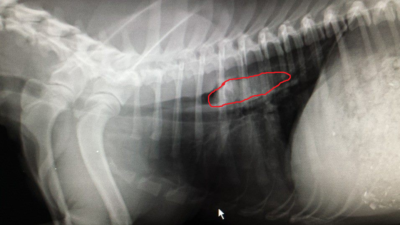
Radiograph of a dog chest. The red marker indicates where a chop bone has lodged in the oesophagus and is unable to pass into the stomach.
How To Feed Bones
To minimise the risks of feeding your dog a bone it is best to follow these guidelines.
Always make sure the bone is:
- Raw
- Big
- Never Cut
Raw Bones
When trimmed of fat these raw bones seem to be the most tolerated by dogs.
They are not associated with constipation as much, and if trimmed well, they are not associated with too many other tummy upsets.
Raw bones don’t seem to be as fragile, so less likely to splinter into shards, causing punctures in the mouth or further down the oesophagus or intestine.
Big
How big you ask? Really big!
Even if your pup is 2kg, get a big cow femur knuckle bone (not cut or split in half!) from the butcher and let them gnaw on the knuckles.
Once they’ve eaten the cartilage, throw the bone in the bin. Big dogs or little dogs, they all mostly enjoy these large bones.
It may only take your dog 30-40mins to devour the meat and cartilage, so watch closely!
The biggest benefit of these big bones is that they don’t tend to disintegrate into bone fragments that can then contribute to constipation or perforations.
Chicken frames, chicken necks, and chicken wings are considered treats and offer minimal resistance when chewing, so minimal effect.
They are a waste of time when it comes to dental health.
Never Cut
The cut edge of a bone is easy for the dog to bite over incorrectly and fracture their tooth.
This involves the large carnassial teeth of the dog overlapping the bone and getting the cut edge stuck between them.
As the dog inevitably bites harder, the top tooth (the upper carnassial or Premolar 4) experiences a sideways force and ends up fracturing – developing a slab fracture.
If a fractured tooth is not noticed and appropriate treatment is not given immediately then the tooth dies and a tooth root abscess will form over time.
CONCLUSION: Is Feeding Bones A Yay Or A Nay?
Most vets are not a huge fan of feeding bones to dogs because they see too many animals affected by them (not all are of course).
Vets do realise that people like their dogs to eat bones.
Never feed cooked bones, instead feed raw bones.
Remember that teeth and gums can be damaged by feeding the wrong sort of dog bone.
Raw chicken wings and necks are a complete waste of time for dogs, although they may have a small benefit for cats.
If you do want to feed bones to your dog, please follow these guidelines:
- Raw
- Big
- Never cut
Bones also are never a substitute for teeth cleanings by your veterinarian.
Do you feed bones to your dogs? Have they ever had a problem? Tell us all about your experiences feeding bones to dogs in the comments below.

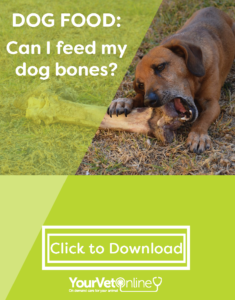




Leave A Comment